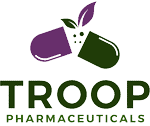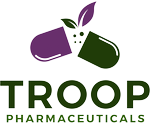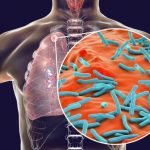Typhoid fever is a life-threatening infection caused by the bacterium Salmonella Typhi. It is usually spread through contaminated food water. Once Salmonella Typhi bacteria are eaten or drunk, they multiply and spread into the bloodstream.
SYMPTOMS include:
? Prolonged high fever,
? Fatigue
? Headache,
? Nausea
? Abdominal pain
? Constipation or Diarrhoea.
Typhoid is diagnosed by detecting the presence of S. typhi via blood, stool, urine, or bone marrow sample.
RISK FACTORS
Typhoid risk is higher in populations that lack access to safe water and adequate sanitation.
Poor communities and vulnerable groups including children are at highest risk.
TREATMENT
The only effective treatment for typhoid is antibiotics. The most commonly used are ciprofloxacin (for non-pregnant adults) and ceftriaxone.
As resistance to antibiotics has emerged including to fluoroquinolones, newer antibiotics such as cephalosporins and azithromycin are used in the affected regions.
Other than antibiotics, it is important to rehydrate by drinking
adequate water.
PREVENTION
– Vaccination
Two vaccines have been used for many years to protect people from typhoid fever:
This can be achieved by oral medication or a one-off injection
The following are some general rules to follow to help minimize the chance of typhoid infection:
?Drink bottled water, preferably carbonated.
?If bottled water cannot be sourced ensure water is heated for at least one minute before consuming.
?Be wary of eating anything that has been handled by someone else.
?Avoid eating at street food stands, and only eat food that is still hot.
?Do not have ice in drinks.
?Avoid raw fruit and vegetables, peel fruit yourself, and do not eat the peel.
?Avoid raw milk and products made from raw milk. Drink only pasteurized or boiled milk.
Foods to eat
On the typhoid diet, you should opt for foods lower in fiber, such as cooked vegetables, ripe fruits, and refined grains.
It’s also important to stay hydrated and drink plenty of water.
Here are some foods to enjoy on the typhoid diet:
- Cooked vegetables: potatoes, carrots, green beans, beets, squash
- Fruits: ripe bananas, melons, applesauce, canned fruit
- Grains: white rice, pasta, white bread, crackers
- Proteins: eggs, chicken, turkey, fish, tofu, ground meat
- Dairy products: low fat or fat-free pasteurized milk, yogurt, cheese, and ice cream (as tolerated)
- Beverages: bottled water, herbal tea, coconut water, juice, broth
Foods to avoid
Foods that are high in fiber should be limited on the typhoid diet to help ease digestion.
This includes raw fruits and vegetables, whole grains, nuts, seeds, and legumes.
Spicy foods and foods that are high in fat may also be difficult to digest and should be limited on the typhoid diet.
Here are some foods that you should limit or avoid:
- Raw vegetables: broccoli, kale, cauliflower, cabbage, onions
- Fruits: dried fruit and raw berries, pineapple, and kiwi
- Whole grains: quinoa, couscous, barley, buckwheat, brown rice
- Nuts: almonds, pistachios, macadamia nuts, walnuts
- Seeds: pumpkin seeds, flax seeds, chia seeds
- Legumes: black beans, kidney beans, lentils, chickpeas
- Spicy foods: hot peppers, jalapeños, paprika, cayenne pepper
- Fatty foods: donuts, mozzarella sticks, fried chicken, potato chips, onion rings
In conclusion, even when the symptoms go away, people may still be carrying typhoid bacteria, meaning they can spread it to others through their faeces.
It is important for people being treated for typhoid fever to do the following:
?Take prescribed antibiotics for as long as the doctor has prescribed.
?Wash their hands with soap and water after using the bathroom, and do not prepare or serve food
people. This will lower the chance of passing the infection on to someone else.
?Have their doctor test to ensure that no Salmonella Typhi bacteria remain in their body.
Written by: Chinonye Machie




